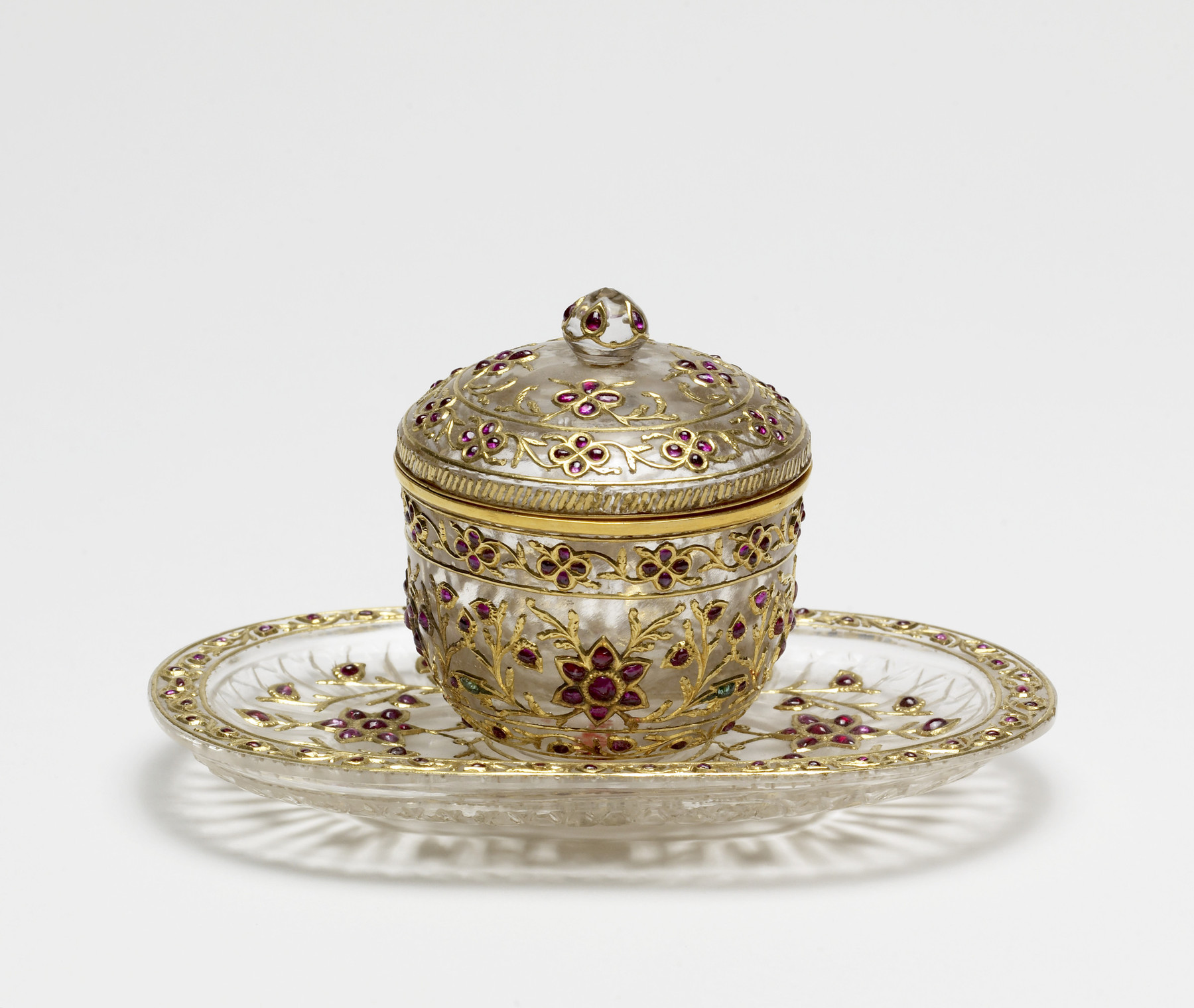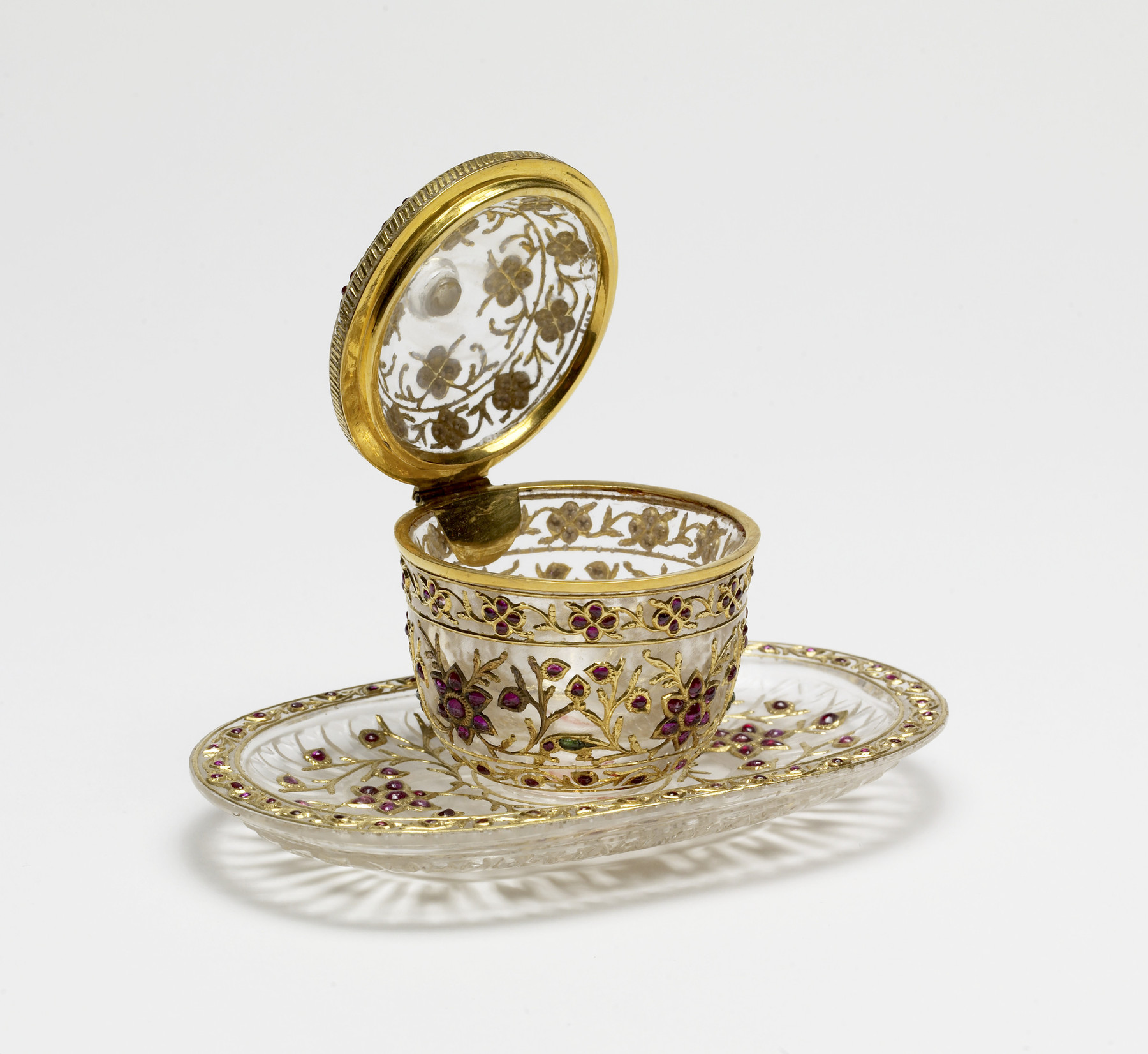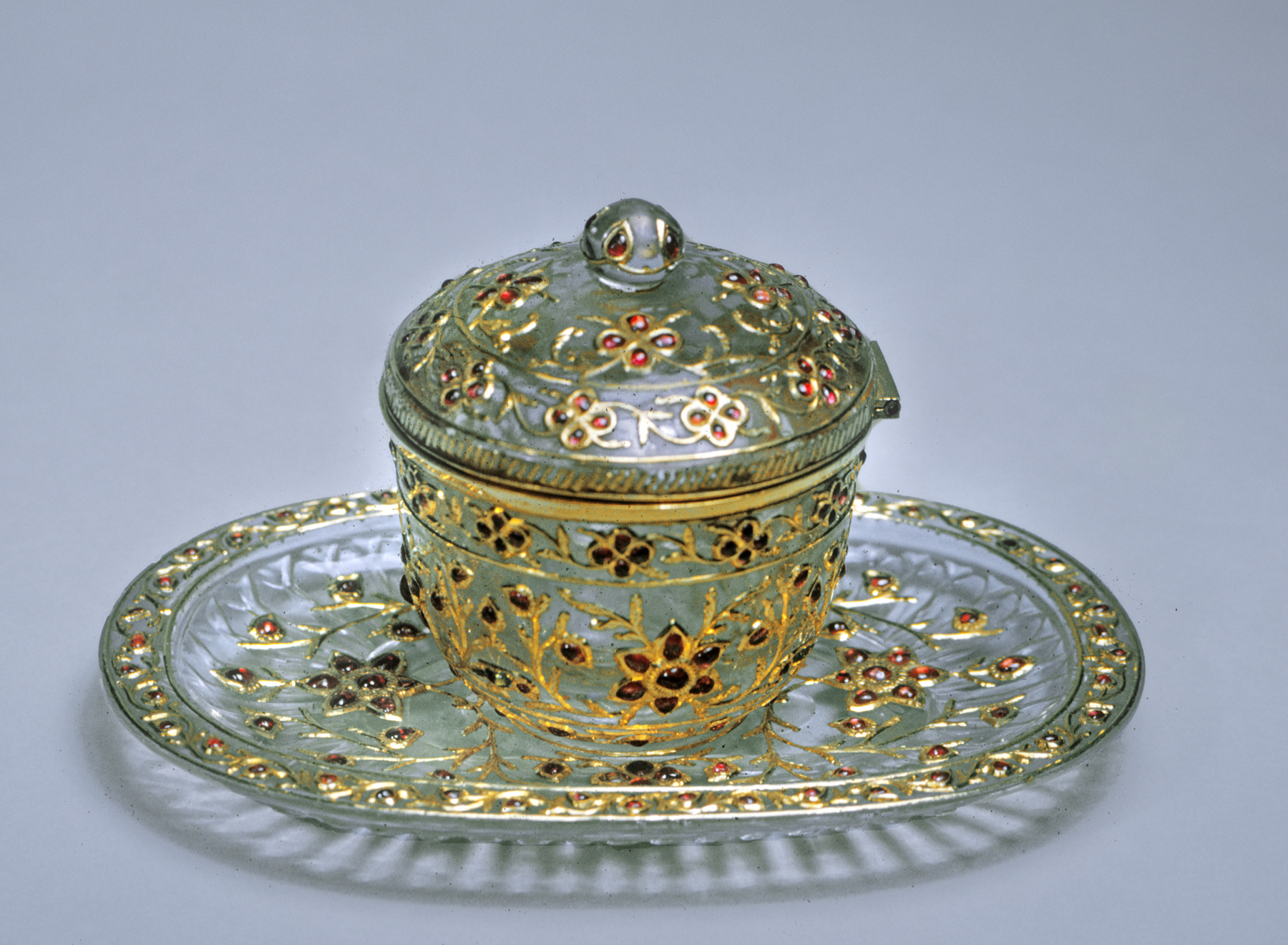Container and Tray with Floral Pattern
(Islamic World )
India has a rich tradition of jeweled arts. Gold and gems were used to embellish a variety of functional objects, such as boxes, spoons, pen boxes, and small containers. The most distinctively Indian approach to gem setting is the "kundan" technique, seen here, in which soft and malleable nearly pure gold is pressed around gems to hold them in place. No claws or prongs are used in this process so that surfaces may be seamlessly decorated. Craftsmen continue to use the "kundan" technique in India today.
Provenance
Provenance (from the French provenir, 'to come from/forth') is the chronology of the ownership, custody, or location of a historical object. Learn more about provenance at the Walters.
Purchased by Henry Walters, Baltimore; by bequest to Walters Art Museum, 1931.
Exhibitions
| 2012 | Paradise Imagined: Images of the Garden in the Islamic and Christian World. The Walters Art Museum, Baltimore. |
| 1987 | Islamic Jewelry. The Israel Museum, Jerusalem, Jerusalem. |
| 1984-1985 | Illuminated Manuscripts: Masterpieces in Miniature. The Walters Art Gallery, Baltimore. |
Geographies
India (Place of Origin)
Measurements
H: 3 3/16 x W: 4 3/8 x D: 2 11/16 in. (8.1 x 11.2 x 6.9 cm); Inkpot H: 2 5/16 x W: 2 1/16 x Diam: 2 in. (5.9 x 5.3 x 5 cm); Tray H: 7/16 x W: 4 3/8 x D: 2 11/16 in. (1.1 x 11.2 x 6.9 cm)
Credit Line
Acquired by Henry Walters
Location in Museum
Not on view
Accession Number
In libraries, galleries, museums, and archives, an accession number is a unique identifier assigned to each object in the collection.
In libraries, galleries, museums, and archives, an accession number is a unique identifier assigned to each object in the collection.
41.256






